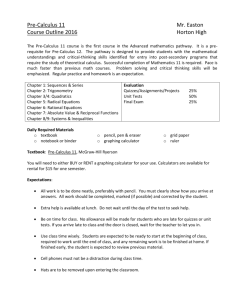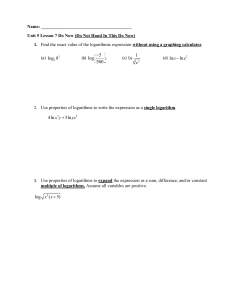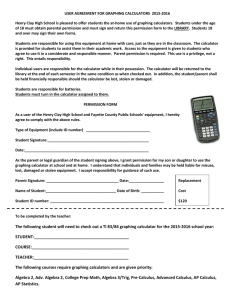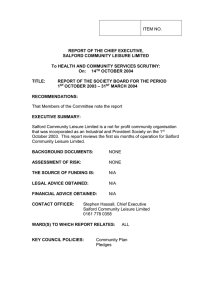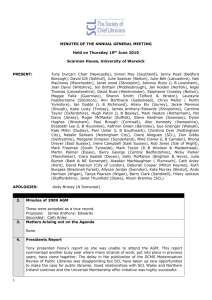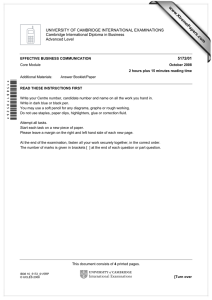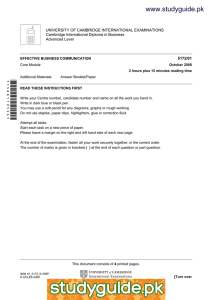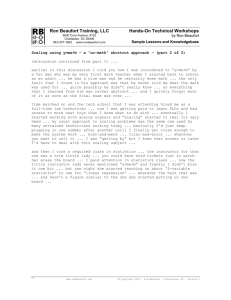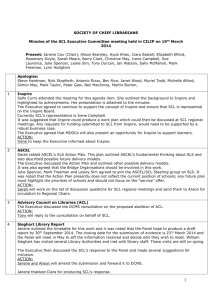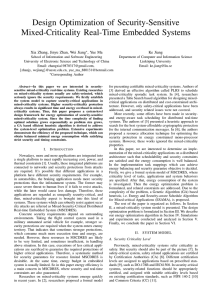Build a rectangular pen with three parallel partitions using 500 feet
advertisement
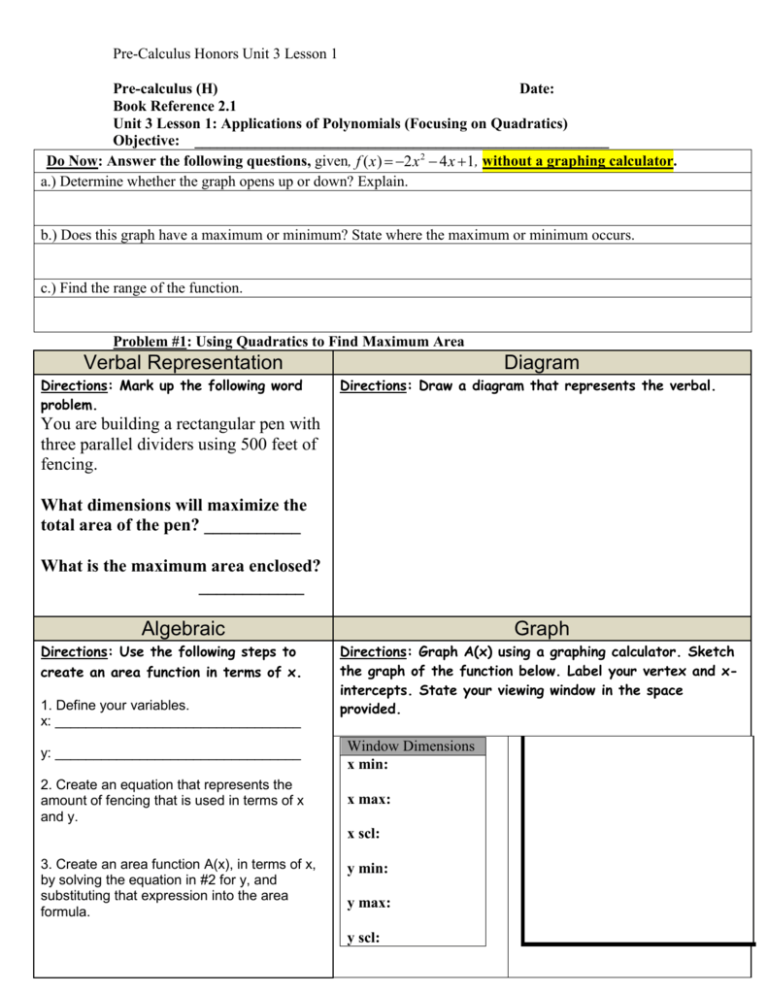
Pre-Calculus Honors Unit 3 Lesson 1 Pre-calculus (H) Date: Book Reference 2.1 Unit 3 Lesson 1: Applications of Polynomials (Focusing on Quadratics) Objective: _______________________________________________________ Do Now: Answer the following questions, given, f (x) = -2x 2 - 4x +1, without a graphing calculator. a.) Determine whether the graph opens up or down? Explain. b.) Does this graph have a maximum or minimum? State where the maximum or minimum occurs. c.) Find the range of the function. Problem #1: Using Quadratics to Find Maximum Area Verbal Representation Directions: Mark up the following word problem. Diagram Directions: Draw a diagram that represents the verbal. You are building a rectangular pen with three parallel dividers using 500 feet of fencing. What dimensions will maximize the total area of the pen? ___________ What is the maximum area enclosed? ____________ Algebraic Directions: Use the following steps to create an area function in terms of x. 1. Define your variables. x: ________________________________ Graph Directions: Graph A(x) using a graphing calculator. Sketch the graph of the function below. Label your vertex and xintercepts. State your viewing window in the space provided. y: ________________________________ Window Dimensions x min: 2. Create an equation that represents the amount of fencing that is used in terms of x and y. x max: x scl: 3. Create an area function A(x), in terms of x, by solving the equation in #2 for y, and substituting that expression into the area formula. y min: y max: y scl: Pre-Calculus Honors Unit 3 Lesson 1 Problem #2:Using Quadratics in the Real World Verbal Representation Diagram Directions: Mark up the following word Directions: Draw a diagram that represents the problem. verbal. A large painting in the style of Rubens is 3 feet longer than it is wide. If the wooden frame is 12 inches wide and the area of the picture and frame is 208 square feet, find the dimensions of the painting. Algebraic Graph 1. Create an equation that represents the area of the painting and frame. Directions: Solve the equation you created graphically below, using a graphing calculator. State your viewing window in the space provided. 2. Solve the equation algebraically to find the dimensions of the painting. Window Dimensions x min: x max: x scl: y min: y max: y scl: Pre-Calculus Honors Unit 3 Lesson 1 Problem #3: Using Quadratics in the Real World Verbal Representation Directions: Mark up the following word problem. Diagram Directions: Draw a diagram that represents the verbal. Julie Stone designed a rectangular patio that is 25 feet by 40 feet. A terraced strip, of uniform width, surrounds the patio. If the area of this terraced strip is 504 square feet, find the width of the strip. Algebraic 1. Create an equation that represents the area of the terrace. Graph Directions: Solve the equation you created graphically below, using a graphing calculator. State your viewing window in the space provided. Window Dimensions x min: 2. Solve the equation algebraically to find the width of the strip. x max: x scl: y min: y max: y scl: Pre-Calculus Homework: Continue to work on any problems that were not completed during the allowed class time.
